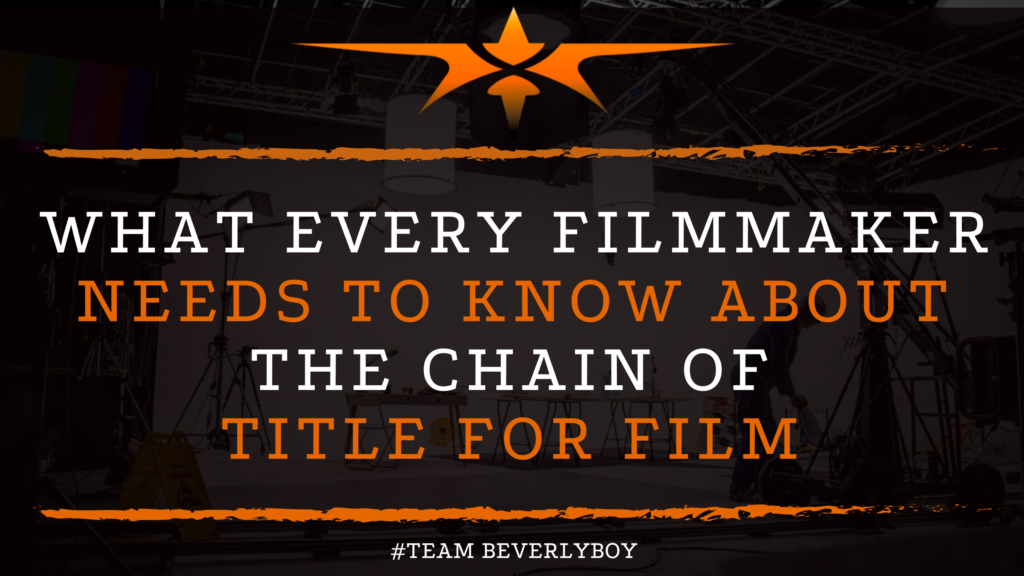What Every Filmmaker Needs to Know about the Chain of Title for Film
The chain of title for film represents a historical, chronological records keeping. Which proves that the production company took all necessary steps to ensure they own the copyrights and have full permission to the creative works used within a film. Before a film can be sold for distribution, a clean chain of titles is required. But, what does all of this mean?

What is a Chain of Title for Film?
Firstly, a chain of title for film is a series of legal documents and agreements. They’re used by filmmakers to establish proprietary rights, or ownership rights, to a motion picture project.
The chain of title will include various documents as evidence of assignment of copyright. Or other permissions to the individuals involved in the filmmaking process. From the conception of the film story through completion of the footage and final distribution of the motion picture.
So a clean chain of title represents a document chain that is free from any gaps in ownership. Or any other potential issues that would give rise to any potential doubt regarding ownership of the intellectual property.
For example
At each stage of the production process, there should be appropriate clearances and release forms as well as other pertinent documentation that provides rights to intellectual property, rights to publicity, and other important licenses and releases to the filmmaker.
Moreover, any missing documentation, or any significant gaps in the documentation that cannot be fully explained and verified might lead to questions as to the actual ownership of the rights to production or distribution of a film.
What’s In the Chain of Title for Film?
Further, whoever is responsible for creating the film at that particular stage of the production. They will be responsible for providing documentation to establish and support the chain of title.
Generally, documentation is in the form of original copies or duplicate original copies of licensing agreements, waivers, change of ownership documents. And any other details releasing or providing permission to proprietary rights involved in the production of a film.
Documentation in chain of title can include any and all of the following:
- Copyright registration or receipt of filing.
- Screenplay assignment agreement or concept adaptation agreement.
- Copyright owner agreement to right to represent and sell.
- Distributor agreements.
- Screenplay purchase agreements.
- Screenplay acquisition agreement from original literary material copyright owner.
- Life story rights agreements.
- Talent release forms and agreements.
- Crew release forms and agreements.
- Location release forms and agreements.
- Copyright clearance forms for logos, costumes, product releases, sound and audio.
- Music licensing including original composition licensing and licensing to the recording.
- Third party agreements and settlements.
- Post-production release agreements.
Reviewing Chain of Title
Additionally, as a filmmaker, it’s your job (or your legal counsel’s job) to review the appropriate documentation at each stage in which the production advances.
Establishing a chronological chain of title, which represents the transfer of ownership rights. Furthermore, the logical progression of additional rights and permissions throughout the many steps involved in producing a film is important.
Without a clean chain of title, you could be shocked to find out that you don’t actually own your production and that you could potentially face legal challenges if you were to distribute the film publicly.
Finally, before you sell a film, make sure that you’re focused on establishing a clean chain of title, and that you’re acquiring the appropriate copyrights and clearances along every step of the production process.

